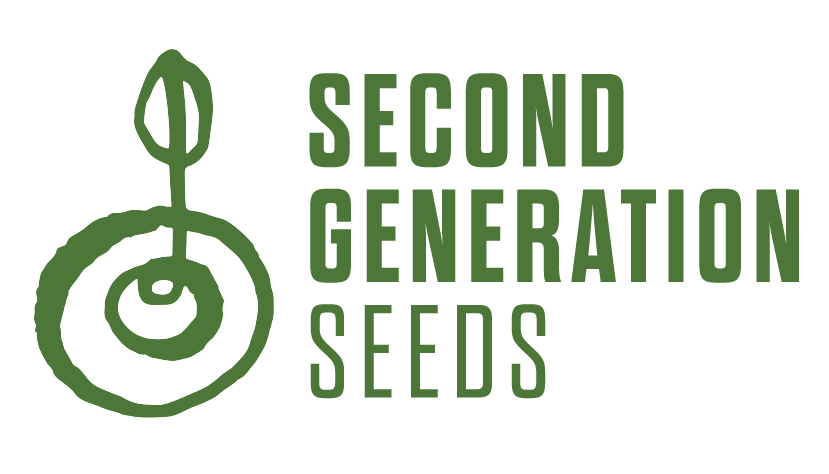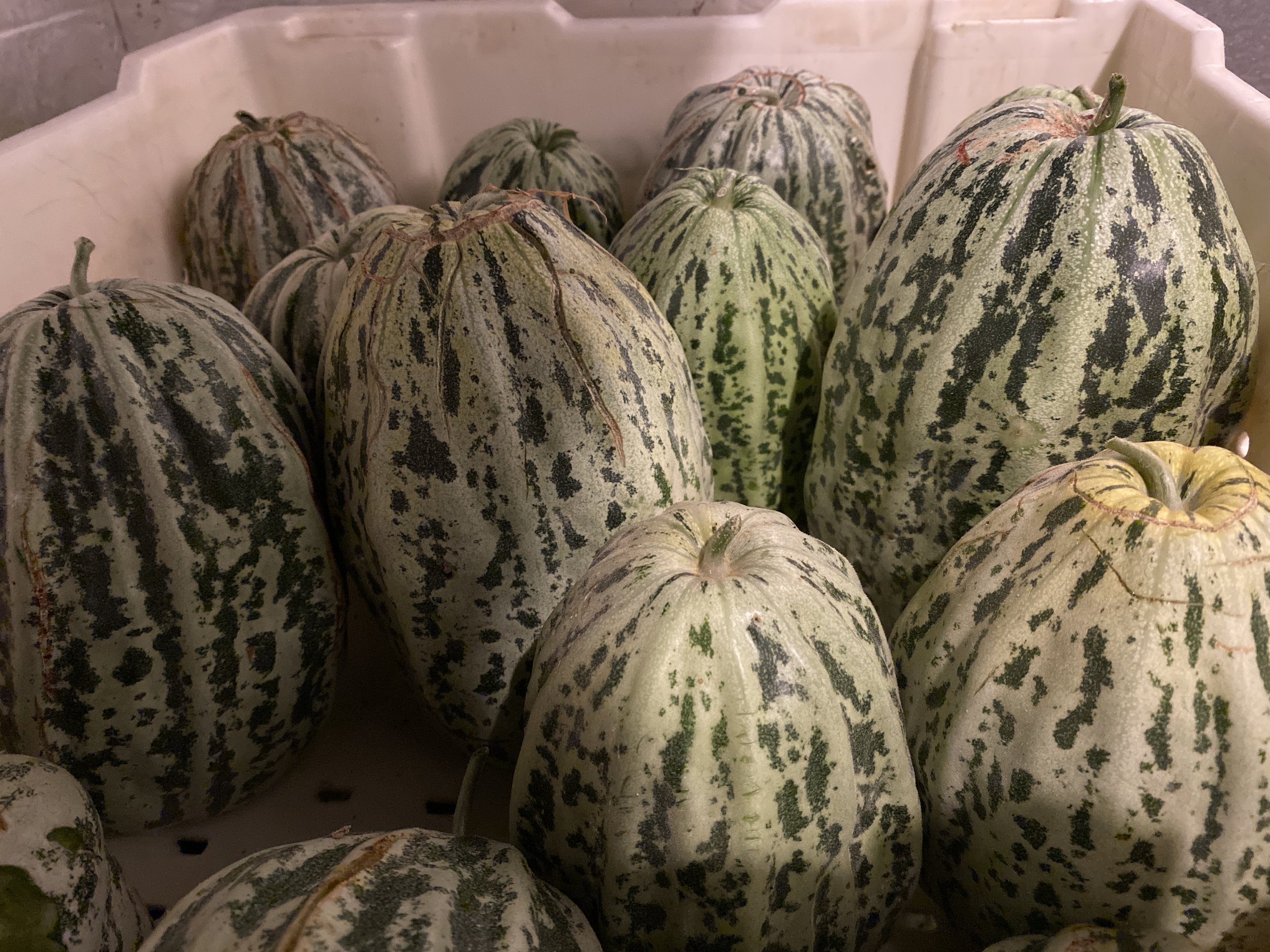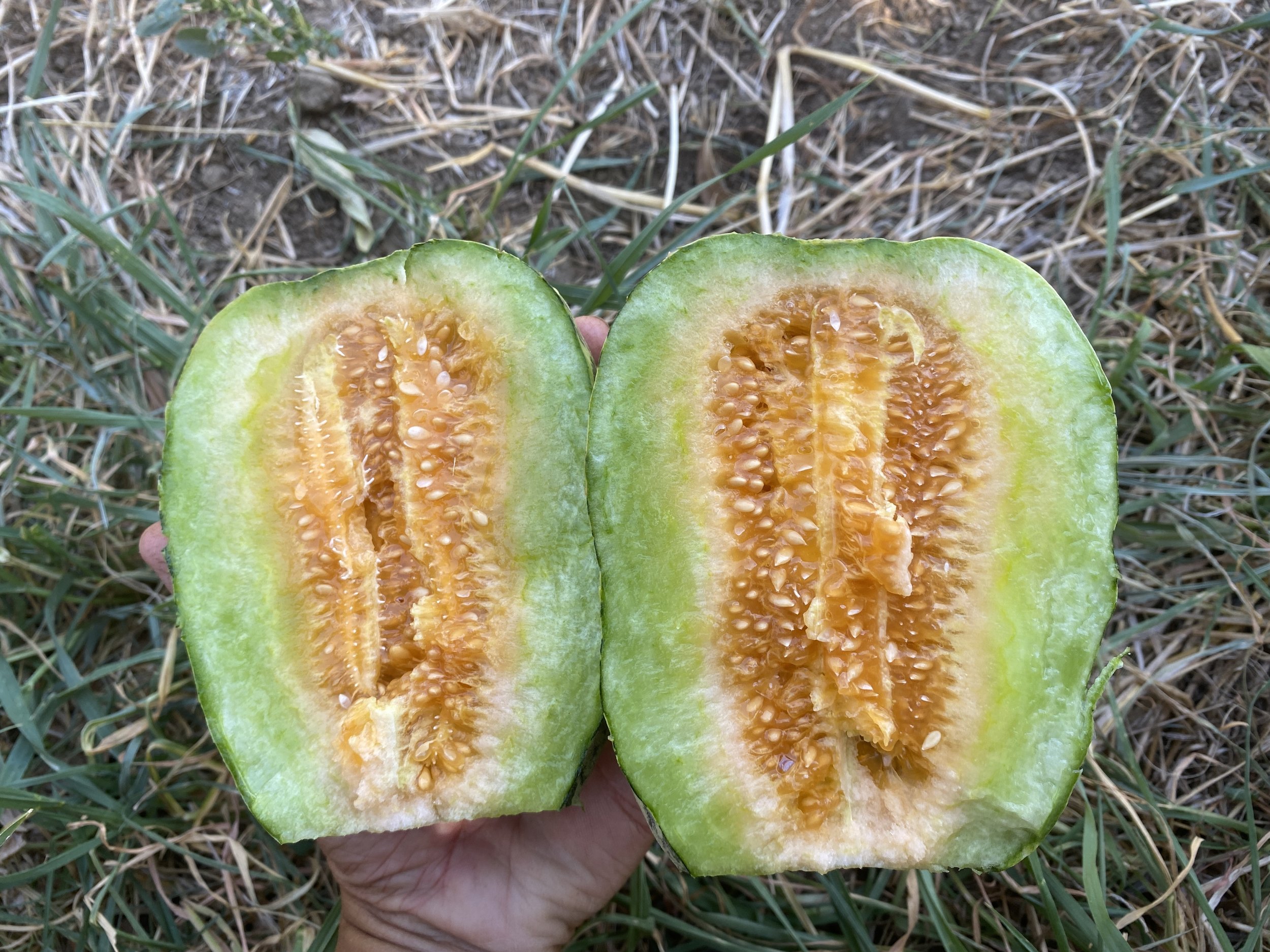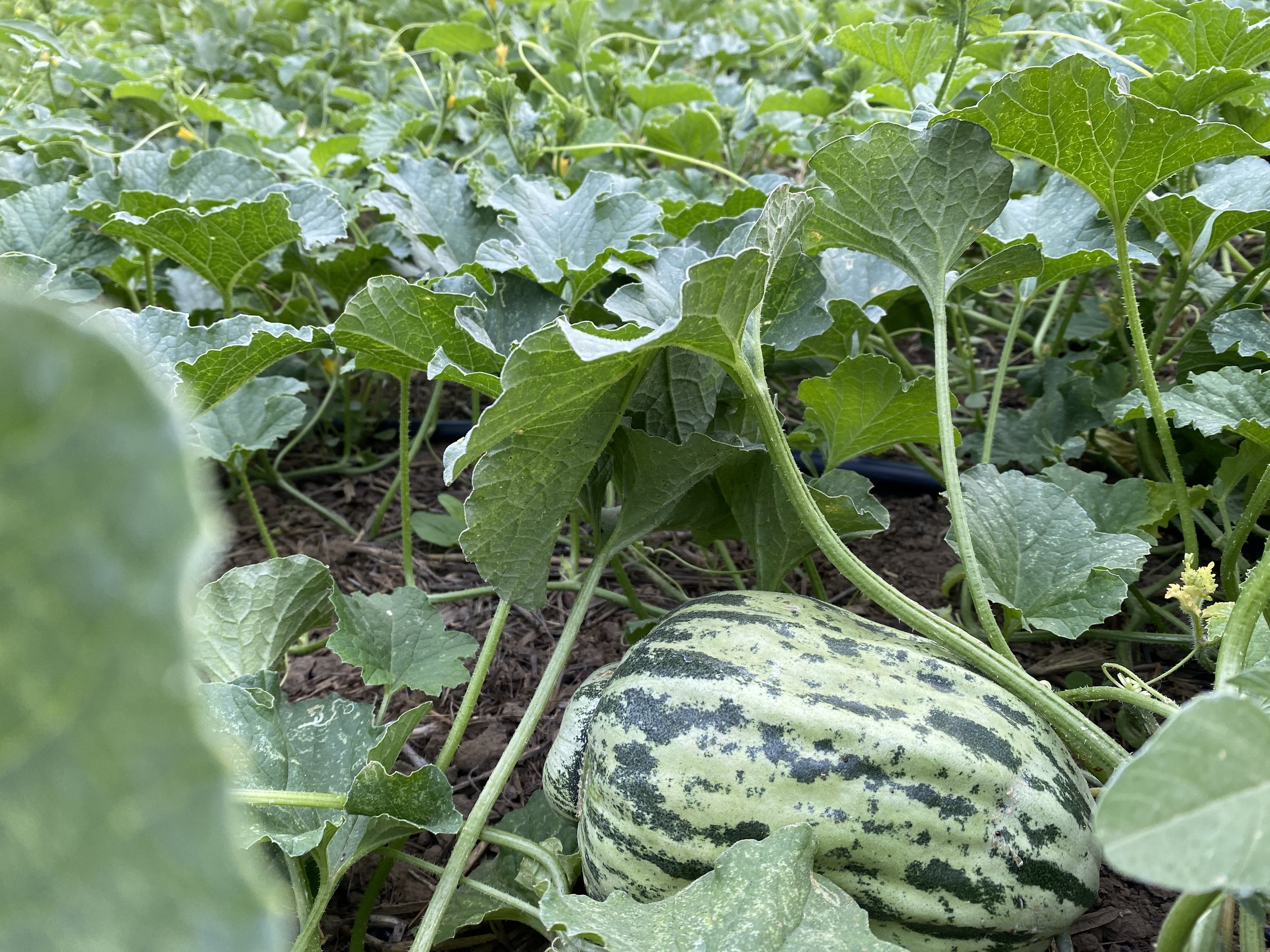Gaeguri Chamoe
개구리참외, Frog Melon, Seonghwan Chamoe
Cucumis melo chinensis group
Seeds per Packet: 25
Also known as Seonghwan Chamoe, this variety is considered to be one of two main “native” landraces of chamoe in Korea. Striking speckled fruit are reminiscent of their name which means frog melon.
Affectionately named “frog melon” due to their speckled green skin, these chamoe are also known as Seonghwan Chamoe, representing the location that was once their cultivation center. Though production was interrupted in the 60’s as yellow Euncheon chamoe and netted melons became market standards, Gaeguri Chamoe are considered one of the two major native landraces of Korean melons. In the 1920’s production spiked, as these chamoe were considered regal gifts, shipped to Japan for royalty and diplomats. For the past decade, farmers in Korea have been increasing production, propelled by Gaeguri Chamoe’s unique flavor, texture and health benefits. Their flavor is truly unmatched. A surprisingly thin skin yields to a crunchy crisp green flesh that gradually softens and turns orange as you get to the seed cavity where the sweetest flavors are found. Basically a bite tastes like a combination of a refreshing cucumber alongside something with the texture of watermelon and the flavor of cantaloupe. Their main challenge is that they don’t store particularly well, and can be tricky to harvest.
Days to Maturity: 70 days. As fruit matures, they will lighten in color and gradually turn yellow. Once you see the blossom end beginning to be yellow, you can harvest. Immature fruits are more cucumber-like. Best harvested when fruit is yellow throughout skin. Flesh will be orange near seed cavity, radiating out towards skin. Skin and seeds are all edible and delicious!
Growing Tips: Chamoe appreciate fertile and aggregated soil. This variety has always been stewarded in agroecological systems and thrives with low to no input. Fruit does not slip when mature.
When to Plant: Warm season annual. Direct seed in field when soil has warmed (>65F) and when weather is consistently even. Start indoors in 50 cell flats. Seedlings can be transplanted approximately 3 weeks after emergence. Seeds are harder than other melon varieties and germination tends to be more staggered. Soaking prior to planting can help.
Planting Depth: ½”
Spacing: If direct seeding, plant 3 seeds every foot. Thin or transplant so there is 1 plant every 18.”
Sun: Full.
Water: Deep, infrequent watering is best as plants get established and through flowering. Once fruit is nearly sized up, stop watering.
Grower: Namu Farm, Winters, CA



